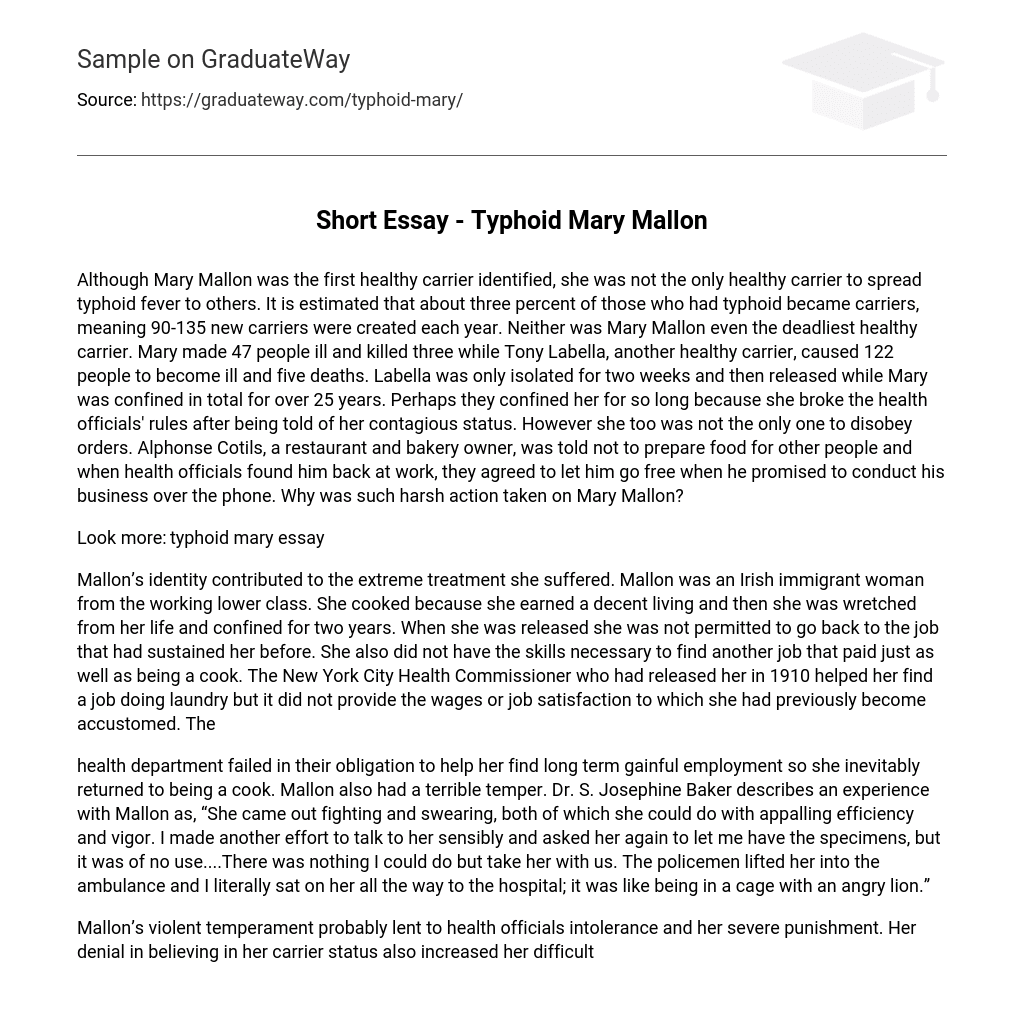Although Mary Mallon was the first healthy carrier identified, she was not the only healthy carrier to spread typhoid fever to others. It is estimated that about three percent of those who had typhoid became carriers, meaning 90-135 new carriers were created each year. Neither was Mary Mallon even the deadliest healthy carrier. Mary made 47 people ill and killed three while Tony Labella, another healthy carrier, caused 122 people to become ill and five deaths. Labella was only isolated for two weeks and then released while Mary was confined in total for over 25 years. Perhaps they confined her for so long because she broke the health officials’ rules after being told of her contagious status. However she too was not the only one to disobey orders. Alphonse Cotils, a restaurant and bakery owner, was told not to prepare food for other people and when health officials found him back at work, they agreed to let him go free when he promised to conduct his business over the phone. Why was such harsh action taken on Mary Mallon?
Look more: typhoid mary essay
Mallon’s identity contributed to the extreme treatment she suffered. Mallon was an Irish immigrant woman from the working lower class. She cooked because she earned a decent living and then she was wretched from her life and confined for two years. When she was released she was not permitted to go back to the job that had sustained her before. She also did not have the skills necessary to find another job that paid just as well as being a cook. The New York City Health Commissioner who had released her in 1910 helped her find a job doing laundry but it did not provide the wages or job satisfaction to which she had previously become accustomed. The
health department failed in their obligation to help her find long term gainful employment so she inevitably returned to being a cook. Mallon also had a terrible temper. Dr. S. Josephine Baker describes an experience with Mallon as, “She came out fighting and swearing, both of which she could do with appalling efficiency and vigor. I made another effort to talk to her sensibly and asked her again to let me have the specimens, but it was of no use….There was nothing I could do but take her with us. The policemen lifted her into the ambulance and I literally sat on her all the way to the hospital; it was like being in a cage with an angry lion.”
Mallon’s violent temperament probably lent to health officials intolerance and her severe punishment. Her denial in believing in her carrier status also increased her difficulties with the health department. She refused to acknowledge any connection between her working as a cook and the typhoid cases. She believed she was being persecuted unfairly. Mallon maintained she was healthy and had never had typhoid fever so she couldn’t be the source of the outbreaks. Although harsh, public health authorities determined that permanent quarantine was the only way to prevent Mallon from spreading typhoid. Their actions bring up the issue: when do you stop protecting individual rights and start protecting the community? Mallon’s example also raises the point: those who endanger the health of others are more likely to cooperate with officials trying to stem the spread of disease if their economic security were maintained and if they could be convinced that health policies would treat them fairly.





